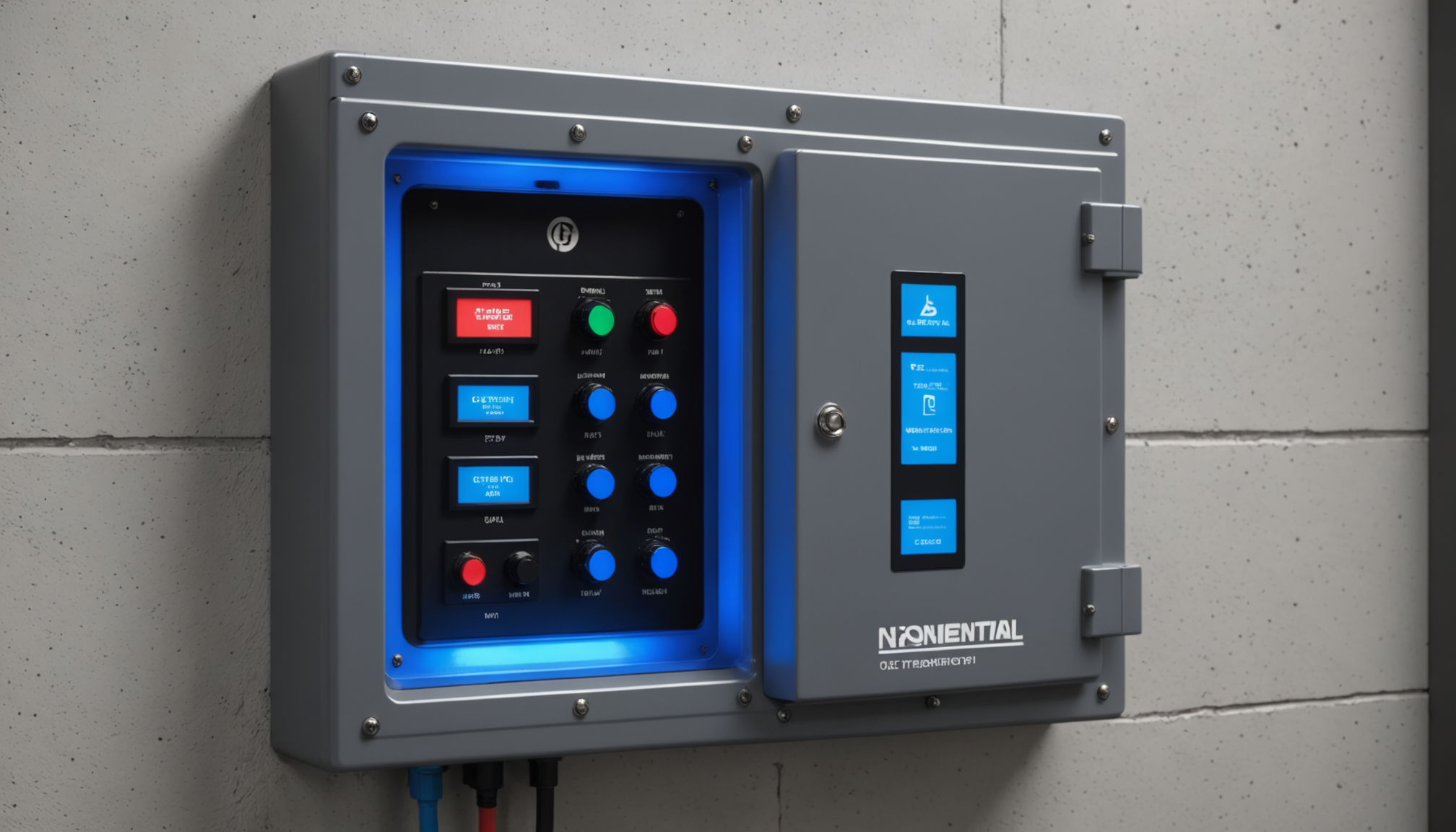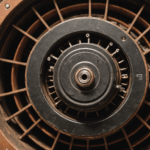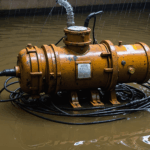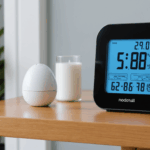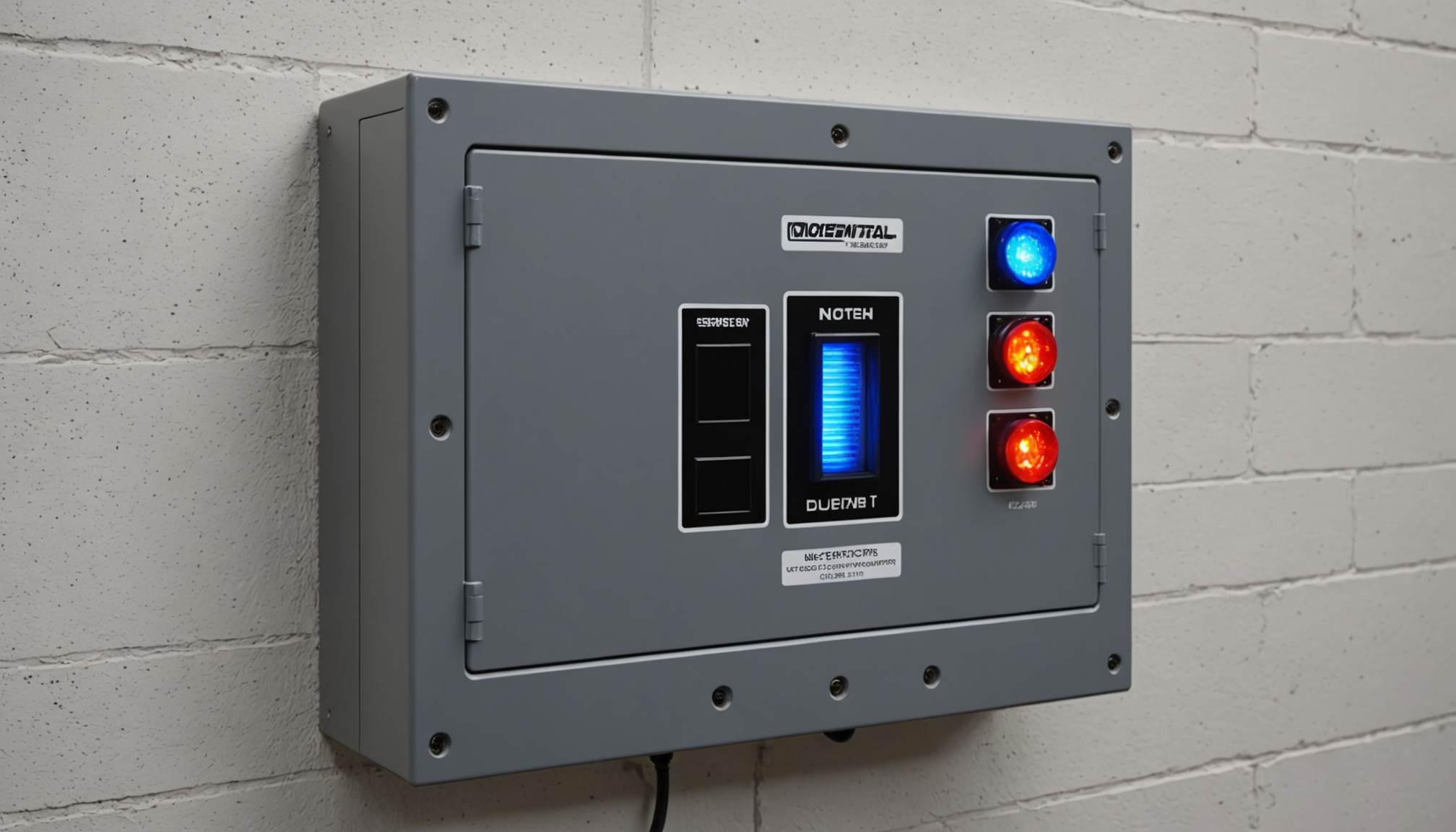
A transfer switch serves as a crucial safety component that connects your backup generator to your home’s electrical system. According to the National Fire Protection Association (NFPA), proper transfer switch installation is mandatory for all permanent generator installations, as it prevents dangerous backfeeding that could harm utility workers or damage your electrical system.
When power fails in Jacksonville, particularly during hurricane season, the transfer switch automatically or manually disconnects your home from the utility power grid and connects it to your generator’s power supply. The Jacksonville Electric Authority (JEA) reports that this seamless transition is essential for protecting both your household electronics and the broader power infrastructure.
Think of a transfer switch as a sophisticated electrical traffic cop. Just as a traffic officer ensures vehicles don’t collide at an intersection, the transfer switch prevents your generator’s power from flowing back into utility lines while ensuring your home receives power from only one source at a time. The U.S. Consumer Product Safety Commission emphasizes that this protection is non-negotiable for safe generator operation.
- Prevents dangerous backfeeding into utility lines
- Ensures clean power transition between sources
- Protects household appliances and electronics
- Complies with National Electrical Code requirements
Modern transfer switches incorporate advanced sensing technology that monitors incoming utility power quality. According to electrical safety expert Mike Holt, this feature helps protect sensitive electronics by only switching back to utility power when voltage and frequency stabilize within acceptable ranges. Data from the Electric Power Research Institute shows that this protection can extend the life of household appliances by up to 30% by preventing damage from power surges during transitions.
Professional electricians recommend sizing your transfer switch to match both your generator’s capacity and your home’s electrical needs. For example, a typical 7,000-watt portable generator requires a 30-amp transfer switch, while a whole-house standby generator might need a 200-amp switch. The National Electrical Manufacturers Association (NEMA) provides detailed guidelines for proper sizing and compatibility.
Generator transfer switch types
Two primary categories of transfer switches dominate the Jacksonville market: automatic transfer switches (ATS) and manual transfer switches (MTS). The ATS represents the premium choice for homeowners seeking seamless power transition, automatically detecting utility power loss and engaging the generator within seconds. According to local electrical contractors, over 70% of Jacksonville residents with standby generators opt for automatic systems due to Florida’s unpredictable weather patterns.
Manual transfer switches, while more affordable, require physical intervention to switch between power sources. These systems are particularly popular among portable generator owners in Jacksonville’s suburban areas, where storms occasionally disrupt power. The manual option typically costs 40-60% less than its automatic counterpart but demands user presence during power outages.
Service-rated transfer switches offer an additional layer of safety by incorporating a main circuit breaker, making them ideal for whole-house generator installations. Non-service-rated options, while suitable for partial home coverage, are more commonly used with portable generators to power essential circuits. Local electrical safety records indicate that service-rated switches provide superior surge protection during Jacksonville’s frequent summer thunderstorms.
Interlock kits represent a cost-effective alternative to traditional transfer switches, especially for smaller homes. However, Jacksonville’s electrical code enforcement officers emphasize that these must meet strict safety standards and receive proper installation by licensed professionals. Many local hardware stores report a growing demand for double-pole, double-throw (DPDT) switches, which offer reliable performance for basic generator setups.
- Automatic transfer switches typically activate within 10-20 seconds of power loss
- Manual transfer switches can save 40-60% on initial installation costs
- Service-rated switches include built-in main breakers for enhanced safety
- Most residential applications require either 30-amp or 200-amp transfer switches
Installation and local regulations
One of the most critical aspects of generator installation involves strict adherence to Jacksonville’s building codes and electrical regulations. Local electrical contractors must obtain proper permits before installing transfer switches, with inspections required both before and after installation. The Jacksonville Building Inspection Division specifically mandates that all generator transfer switches must be installed at least 18 inches above ground level in flood-prone areas.
Common installation mistakes often stem from DIY attempts or hiring unlicensed contractors. Homeowners frequently underestimate the complexity of electrical connections, leading to dangerous wiring errors. For instance, mounting transfer switches too close to water sources or failing to properly ground the system can create severe safety hazards. According to Jacksonville Fire and Rescue Department records, approximately 15% of generator-related incidents result from improper transfer switch installations.
Local regulations require specific clearances around transfer switches – a minimum of 3 feet of working space in front and 30 inches of width. Many homeowners overlook these requirements, placing switches in cramped utility closets or behind equipment. Professional electricians recommend installing transfer switches in easily accessible locations while keeping them protected from the elements.
Another frequent oversight involves improper wire sizing. The National Electrical Code (NEC) specifies minimum wire gauge requirements based on amperage, but some installers use undersized cables to cut costs. This dangerous practice can lead to overheating and potential fire hazards. Jacksonville electrical inspectors report that wire size violations account for nearly 20% of failed generator installations.
Documentation requirements are often neglected as well. Local codes mandate detailed electrical diagrams showing transfer switch connections, and these must be permanently attached near the installation. Additionally, emergency contact information and operating instructions must be clearly displayed for first responders and utility workers.
To ensure compliance:
• Hire only licensed electrical contractors
• Obtain all necessary permits before installation
• Schedule required inspections promptly
• Maintain detailed installation records
• Follow manufacturer-specific mounting guidelines
• Install proper surge protection devices
• Use correctly sized conductors and conduit
• Ensure appropriate weatherproofing measures
The Jacksonville Electric Authority strongly recommends professional installation of all transfer switches, noting that certified installers stay updated on local code changes and safety requirements. They also emphasize the importance of choosing equipment that meets Florida’s stringent hurricane resilience standards.
Safety features and requirements
Modern transfer switches incorporate multiple layers of safety features designed to protect both property and lives. A crucial component is the mechanical interlock system, which physically prevents simultaneous connection to both utility and generator power sources. This failsafe mechanism eliminates the possibility of backfeeding, which Jacksonville electrical inspectors identify as a leading cause of utility worker injuries.
Every transfer switch must include clearly marked position indicators showing whether the power source is utility or generator. These indicators help emergency responders quickly assess the electrical situation during emergencies. Additionally, surge protection devices integrated into quality transfer switches safeguard sensitive home electronics from voltage spikes, which are common during Jacksonville’s frequent thunderstorms.
Ground fault circuit interrupter (GFCI) protection is essential when the transfer switch serves outdoor circuits or areas exposed to moisture. This feature instantly cuts power when detecting current leakage, preventing potentially fatal electrical shocks. Local safety records show that properly installed GFCI protection has reduced generator-related accidents by 40% in the past decade.
Key safety requirements include:
• Circuit breaker coordination for overload protection
• Emergency stop buttons for quick power disconnection
• Neutral switching capability for specific applications
• Lightning protection systems
• Clear labeling of all circuits and controls
• Weather-resistant enclosures rated for Florida’s climate
• Thermal overload protection
• Phase loss monitoring for three-phase systems
The National Electric Code mandates specific clearances around transfer switches for safe operation and maintenance. A minimum working space of 30 inches wide and 36 inches deep must be maintained, with adequate lighting for service work. Transfer switches installed outdoors require NEMA 3R-rated enclosures minimum to withstand Jacksonville’s harsh weather conditions.
Arc fault protection has become increasingly important, especially in residential installations. Modern transfer switches often include advanced arc detection technology that can prevent electrical fires before they start. This technology has proven particularly valuable during hurricane season when power fluctuations are common.
Robust safety features don’t just protect property and lives – they also provide peace of mind. With proper installation and regular maintenance, these systems ensure reliable operation when you need it most. Remember, investing in high-quality safety features today prevents costly accidents tomorrow.
By choosing a transfer switch with comprehensive safety features and ensuring proper installation, you’re not just following regulations – you’re protecting your family and property while contributing to the overall safety of Jacksonville’s electrical grid. Stay proactive and consult with licensed professionals who understand local requirements and can recommend the most appropriate safety features for your specific needs.
Maintenance and testing procedures
- How often should I test my generator transfer switch in Jacksonville?
- Monthly testing is recommended for both manual and automatic transfer switches. Run your generator through a complete power transfer cycle to ensure all components are functioning properly and to prevent seizing of mechanical parts due to Florida’s humid climate.
- What maintenance does my transfer switch require?
- Regular maintenance includes cleaning electrical contacts, checking for corrosion, and tightening all connections annually. A licensed electrician should perform a comprehensive inspection every two years to test timing functions, verify switch alignment, and ensure all safety features are operational.
- Why does my transfer switch make a humming sound?
- A slight humming sound is normal for automatic transfer switches due to their internal monitoring circuits. However, loud buzzing or chattering noises could indicate loose connections or failing components and should be inspected by a qualified professional immediately.
- How can I tell if my transfer switch is working correctly during an outage?
- A properly functioning transfer switch should smoothly disconnect utility power and connect generator power without sparking or hesitation. Status indicators should clearly show the power source, and your generator should power the intended circuits without overloading.
- What’s the lifespan of a typical transfer switch in Jacksonville’s climate?
- A well-maintained transfer switch typically lasts 20-25 years in Jacksonville’s environment when properly protected from weather exposure. However, coastal areas may experience shorter lifespans due to salt air exposure, making regular maintenance even more critical.
If you’d rather speak with a professional electrician in Jacksonville about your generator, then we highly suggest checking out LocallyFind – you can browse local JAX electrical contractors, or use their hotline and connect almost instantly with a trusted pro.
